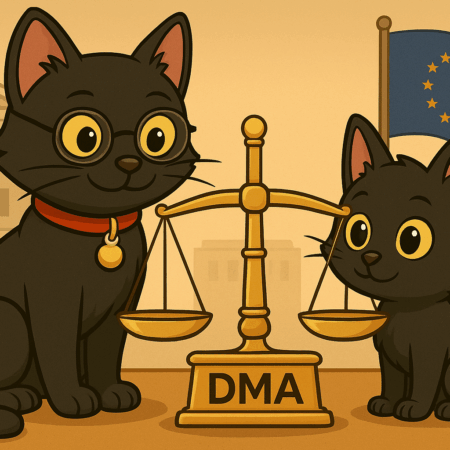The past week in advertising across the UK and Spain has spotlighted two main shifts: how regulatory scrutiny is testing the boundaries of trust in advertising governance, and how streaming services continue to accelerate their ad‑supported business models.
Regulatory scrutiny testing boundaries of trust in advertising and streaming services continue to accelerate their business models, I’m Mark Nolan and this is Advertising Trends Weekly, from madblackcat.com, bringing you the latest from UK and Spain in advertising.
We begin in the UK, where the Advertising Standards Authority has come under fire. Its latest campaign claims to ‘regulate ads across all media’. But critics including New Weather Institute and Badvertising argue this is misleading—it doesn’t cover everything. Shop windows, certain hoardings, some social media posts: all possibly outside its remit. The issue highlights how even regulators must tread carefully when making public claims. Accuracy, after all, builds trust.
Meanwhile, in Spain, change is in the air for streaming. Netflix has officially discontinued its ad‑free Basic plan. From September, subscribers will be moved to a ‘Standard with ads’ plan at €6.99 unless they opt for a more expensive ad‑free option. This move shifts the streaming economy, making ad‑tier the norm rather than the exception. A cheaper price, but ads included. For many users, it’s about value; for advertisers, it’s an invitation to reach more screens.
Supporting this trend, new data confirms ad‑tiers are growing fast across Western Europe. Between late 2024 and April 2025, viewing hours on Netflix’s ad‑supported tier rose by about 32 per cent across five major markets. In both Spain and the UK that rise was roughly 34 per cent. What this means: more eyes on ad‑supported content, more opportunity—but also more responsibility—for brands to make ads that respect viewers.
So what should media planners, brands, and regulators keep in mind? Clarity in messaging. Thoughtful ad placement. And making sure the trade‑offs—price versus interruption—are transparent and fair.
Thank you for joining me. I’m Mark Nolan, this is Advertising Trends Weekly, from madblackcat.com, and you can find more fascinating insights on the website.
Article Contents
ASA under fire: Regulator accused of overclaiming its remit
In the UK, the Advertising Standards Authority (ASA) has been criticised for its recent campaign claiming it “regulates ads across all media.” Advocacy groups including the New Weather Institute, Badvertising, and Adfree Cities argue the ASA’s slogan is misleading because there are ad types and locations outside its jurisdiction—such as certain social media content, shop windows, or parts of airports. These groups have filed a formal complaint, saying that the ASA’s message gives the public an inflated sense of protection against misleading advertisements. The ASA has defended itself, explaining that its wording refers to media rather than all ads, but critics say this distinction will be lost on many.
This episode raises questions around the transparency of regulatory communication. When the institution charged with safeguarding public interest issues messaging that itself is contested on grounds of accuracy, the trust in regulatory systems can be eroded. Transparency, precise language, and clarity about scope are essential if regulators wish to maintain legitimacy.
Streaming ad‑tiers: Spain makes a decisive move
Over in Spain, Netflix has made a bold shift: as of September, the ad‑free “Basic” plan has been discontinued. Existing subscribers to the Basic level are being migrated to a “Standard with ads” plan priced at €6.99 per month. If they wish to remain ad‑free, they now must opt for the higher‑cost “Standard” €13.99 plan or the “Premium” tier at €19.99.
This change marks more than a pricing adjustment. It signals a strategic push to normalise ad‑supported models in streaming in Spain. Netflix is clearly betting that customers are increasingly willing to trade off cost for interruptions—and that offering ad‑free options will remain a premium choice. For advertisers, this opens up expanded reach in Spanish households, especially among users who might have formerly stayed away due to cost.
Ad tiers surge in Western Europe
Recent data from Digital i confirms that streaming with ads is not just growing in Spain but across Western Europe. Between November 2024 and April 2025, viewing hours on Netflix’s ad‑supported “Standard with Ads” plan increased by 32 per cent across five major markets: the UK, Spain, Germany, France, and Italy. In the UK and Spain specifically, viewing rose by 34 per cent.
Another report from Ampere Analysis emphasises that ad‑tier subscriptions now make up more than a quarter of all subscription OTT services* in Western Europe, with nearly 70 million ad‑tier subscriptions in Q1 2025.
Implications and future direction
These developments together suggest a pivot in both consumer expectations and business models. For streamers, ad‑tiers are becoming central to growth, not just supplemental. For regulators, the challenge is to keep pace—to ensure advertising claims are truthful, distinctions are clear, and audiences are properly informed.
Brands and media buyers will need to rethink reach and frequency strategies, especially in Spain where ad‑supported plans are now more deeply embedded. The value proposition for advertising placements in streaming is growing, but so is the importance of creative that respects the viewer experience—ads that feel too disruptive could trigger backlash.
*OTT Services
OTT services, or Over-The-Top services, deliver media content, like video and audio, directly to users over the internet, bypassing traditional distributors like cable or satellite companies. Popular examples include streaming platforms such as Netflix and Spotify, as well as messaging apps like WhatsApp. Users access these services on internet-enabled devices, such as smart TVs, smartphones, and laptops, through dedicated apps or websites.











